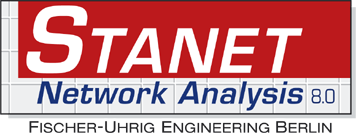Mixed Raster Content (MRC) SDK Libraries
LEADTOOLS MRC libraries simultaneously maximize image compression and image quality with intelligent segmentation and compression, providing everything .NET 6+, .NET Framework, C++ Class Library, C#, VB, and C/C++ developers need to load, view, convert, and save MRC files.

MRC Libraries
A non-MRC image format requires a sacrifice of either compression or quality because the format is designed to only handle one type of image data at a time: bitonal, grayscale, or color. MRC formats are different because they segment images into sections and layers. Using LEADTOOLS MRC SDK libraries, those sections and layers are compressed with an algorithm that is optimal for the characteristics and type of the data that it contains.

Industry-Leading PDF MRC Libraries
LEADTOOLS PDF libraries can save MRC data within PDF files using industry-standard methodologies. This means that MRC-compressed PDF files created by LEADTOOLS can be loaded and viewed in any PDF viewer. By storing complex mixed raster content, developers can create PDF files with better compression and quality than a standard raster PDF file.
- Automatically segment the image with optimization options
- Manually segment the image to take full control over file size and image quality optimization
-
Multiple compression options, including:
- JPEG
- JPEG 2000
- CCITT G3/G4
- JBIG2
- LZW
- MRC
- Automatic background detection
LEADTOOLS also includes PDF SDK libraries that go far beyond just compression.

T.44 MRC Format Libraries
The goal of the ITU-T T.44 recommendation for MRC is to provide an efficient mechanism to exchange and archive images that include bitonal and color areas. T.44 achieves these goals by segmenting images into three layers: foreground, background, and mask. Each layer is separately compressed using the most efficient type of compression for that image data type. When an MRC T.44 file is loaded, the layers are uncompressed and recombined to restore the original image.
- Automatic image segmentation with optimization options
- Manual image segmentation to override or compliment the automatic segmentation results
-
Specify compression algorithm used for each image segment:
- JPEG
- JBIG2
- CCITT G3/G4

LEADTOOLS MRC Compressed Format Libraries
LEADTOOLS employs an efficient image-segmentation algorithm to achieve high compression ratios within the LEADTOOLS Mixed Raster Content (MRC) format. The segmentation process automatically divides the image into nine different image segment types, including background, single color, black and white, text, and full color. LEADTOOLS employs a three-layer image model to structure and combine the data in order to achieve the optimum balance of compression and image quality.
-
Maximizes compression by utilizing nine segment types:
- Background
- Anti-aliased black and white text
- Black and white
- One color
- Two color
- Four color
- Four level grayscale
- Full color image
- 256-level grayscale
- Automatic image segmentation with optimization options
- Manual image segmentation to override automatic segmentation results
-
Specify compression algorithm used for each image segment:
- JPEG
- JBIG
- CCITT G3/G4
- LZW
- CMP
- CMW

Easy to Integrate
LEADTOOLS handles the heavy lifting, eliminating months of R&D, while giving you the best quality and performance available. You'll be free to focus on other components of your application. Download the LEADTOOLS evaluation to streamline your development.

Mixed Raster Content (MRC) SDK Platforms and Programming Interfaces
Operating Systems
Projects that use LEADTOOLS Mixed Raster Content (MRC) libraries can be deployed to Windows devices.
Frameworks
Developers that are leveraging these frameworks can utilize the Mixed Raster Content (MRC) SDK: .NET 6+, .NET Framework, WinForms, C++ Class Library, and ASP.NET
Programming, Scripting, Markup
Mixed Raster Content (MRC) code snippets and demo applications are provided for the following: C#, VB, XAML, and C/C++
Start Coding with LEADTOOLS Mixed Raster Content (MRC)
Mixed Raster Content (MRC) libraries as well as all LEADTOOLS Recognition, Document, Medical, Vector, and Imaging technologies for all development and target platforms, including Windows, Linux, and macOS.









